DETROIT — Nora Azadian always wondered why nature did not fashion the life of humans as it did that of trees, which lose their foliage in the fall and are revived in the spring.
This year, once again, the trees are in full bloom, but now without Nora, who passed away on April 29.
Nora was one of the rare types who was fully content with her life. She was full of a creative spirit and expressed that creativity in many ways. Even her ordinary daily life brimmed with nobility and grace.
She always claimed that in life she had received everything she had wished for and never envied others for status or material goods and never asked for more than she had. That is why she thought she lived her life the way she wanted, full of enthusiasm and vivacity.
She looked upon death stoically and philosophically. She courageously faced the finality of human life and peacefully made the transition.
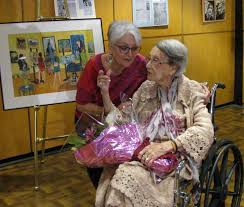
Nora was born into a privileged family in Alexandria. Both sides of her family were involved in professional theater. Even her paternal grandfather, Kevork Ipekian, had been on the stage, although he was an entrepreneur who had moved from Samson to Alexandria to introduce cigarette manufacturing in Egypt, while two other brothers, Gaspard Ipekian and Armen Ipekian, acted professionally in the Armenian and European theater world.
Gaspard Ipekian’s wife, Hripsig, had just finished reading Henrik Ibsen’s play, “A Doll’s House,” when Nora was born. Therefore, she suggested naming her newborn great-niece after the protagonist in the play. Destiny had decided that Nora would grow up and assume the role of Nora in an Armenian translation of “A Doll’s House.”
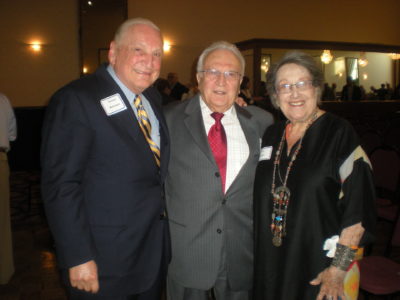
Nora attended Armenian elementary school, and the rest of her schooling was in French at the Lycée Français of Cairo, from which she graduated with a baccalaureate. Her superb Armenian was learned in the family home and the community. In addition, she possessed a working command of English and Greek.
Nora’s mother, Chake Damadian Ipekian, was an accomplished pianist and actress in the Armenian theater. For a long time, she served as president of the Armenian Artistic Union in Cairo. Her father, Aghassi, was the director of sales at the Ipekian Cigarette Company, while he volunteered as the administrator of the theater group of the Armenian Artistic Union.
Nora’s training in the piano was under the rigorous guidance of her aunt, Nevart Damadian, a concert pianist and professional Cairo Conservatory of Music.
Nora’s favorite composer was Chopin, whose waltzes comprised her main repertoire, although she also played Bach and Beethoven.
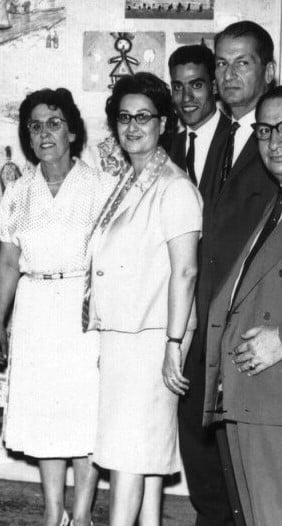
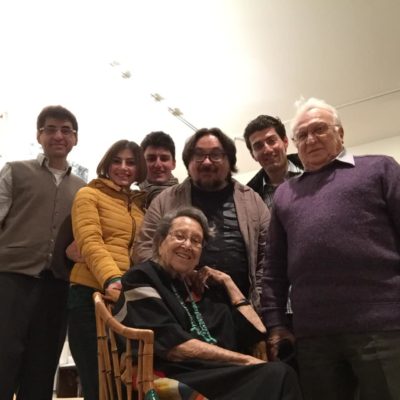
Nora studied art for four years at the studio of prominent Egyptian Armenian Ashod Zorian, where her classmates included the ex-queen of Egypt Farida, Parisian caricaturist Edmond Kiraz, Yasmin, Joe and Shushan Egoyan (Atom Egoyan’s parents), Arte Topalian and Rose Papasian.
Later on, she received an arts degree from the ABC Art School in Paris.
In the 1950s through 1970s, the majority of Egyptian artists were of Armenian extraction and even the local Egyptian talents were the students of the Armenian artists.
The artists who dominated the art market in Egypt included Ashod Zorian, Onnig Avedissian, Puzant (Gojamanian), Simon Samsonian, Alexander Saroukhan, Hagop Hagopian and Hrant Antranikian.
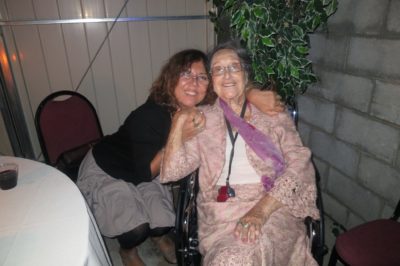
Nora developed her artistic talent early on to join that group of artists, among whom she held own.
Nora participated regularly in Cairo’s annual salon. She held individual art shows and participated in group shows in Egypt, Lebanon, Armenia, Europe and the United States, mostly to critical acclaim.
She was the first one to introduce in Egypt textile paintings and her exhibitions featured women’s dresses, scarves, tablecloths and items in Mondrian’s design or in abstractions of her imagination.
She had a mastery of watercolor, wherein she exhibited spontaneity, poetry and command of vivid colors. Her oil paintings were heavier, allocating dignity and grace to street vendors or veiled Egyptian female figures.
In later years, she realized she had been an astute portraitist, without giving too much thought to the genre.
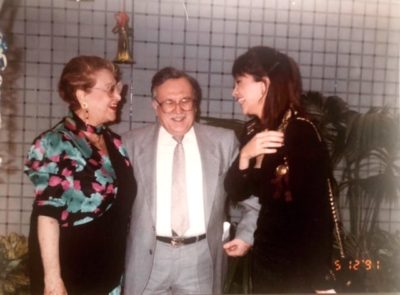
Writing in Journal D’Egypt, art critic Antoine Gennaoi stated: “Four paintings by Nora Azadian emanate ravishing grace, a grace more beautiful than beauty itself. This master of portraits subtly deforms her ‘Two Nubian Figures,’ enveloping them in vivid light and rare colors of a sensuous art.”
Armenian-American sculptor Ruben Nakian, after viewing her art show in Boston, wrote in the guest book, “There is nothing static in Nora Azadian’s art, everything is moving in graceful patterns.”
Educator in Art
Nora was a passionate teacher of art. She always looked for young talents to train and guide in the fundamentals of art and to impart to them her philosophy.
This method of teaching art was derived from Herbert Reed’s book Education Through Art. She taught art in the Lycée Française, the French nuns’ school and the Kalousdian Armenian School.
After moving to Detroit, she taught Armenian history through art at the Armenian General Benevolent Union (AGBU) Alex and Mari Manoogian School.
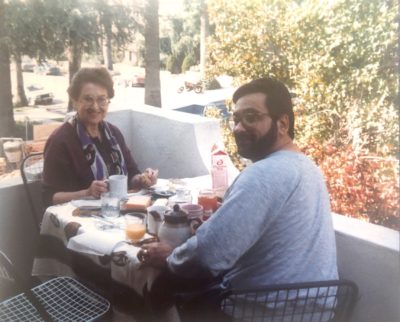
She never promoted her art as vigorously as those of her students. Her students in Egypt have won gold medals at international art competitions at UNESCO in Warsaw, and Shankar in India.
In addition to teaching art, she ran her art studio where advanced students took lessons. She would put her heart and soul into the students’ development. She never isolated the visual arts from other artistic expressions, as she believed in overall development of the artist, who should also be well-versed in music, theater, opera, etc.
Many of her students chose professions in the artistic field, but she molded two particular talents to attain international fame: Chant Avedissian and Varteni Mosdichyan.
Avedissian’s life and destiny in particular were complicated. He was brought back from the brink by Nora Azadian. Chant came from a difficult background, directionless and undisciplined, a potential high-school drop-out. The exasperated Kalousdian administration decided to expel the unruly student. Nora raised hell with them to retain Chant at school and challenged them by stating, “Tomorrow you will be as proud of Chant as you were with the famous French-Armenian artist Carzou,” who also had graduated from the Kalousdian School.
Lo and behold, Chant Avedissian became an artist no less prominent than Carzou, with one painting in the permanent collection of the British Museum in London, and two pieces at the Smithsonian in Washington. Eventually he vindicated Nora’s prophesy.
Performing Arts
During her student years at the French Lycée, Nora was absorbed in studying the French classics. Later on, with a perfect command of the language, she joined a French-speaking drama group, assuming lead roles in plays by Moliere, Racine and Corneil. But most of her dramatic activity was confined to the Armenian theater.
She both directed and assumed major roles in Armenian plays. Cairo’s Armenian Artistic Union sponsored a theater group under the guidance of a professional movie director, Vahe Boyadjian. Most of the actors were either professionals or semi-professionals. Because of the paucity of Armenian dramatic literature, the group ventured to translate plays form European playwrights. Nora played the lead role in the Armenian plays by Yervant Odian (“The French-Turkish War”), Shirvanzadeh (“Armenuhin”) and Michael Gurjian (“Twenty Years later”). She also performed plays translated into Armenian, such as Marcel Pagnol (“Topaz”), Alejandro Cassona (“Trees Die Upright;” The Boat without the Fisherman”) and others.
Nora exercised a very strict discipline when it came to preparing to take the stage. As a result she dominated the stage with a tremendous stage presence.
Egyptian-Armenian playwright Baruyr Massikian had characterized Nora’s voice as “the oboe in a symphony orchestra.”
As part of her performing arts, she attained a reputation for her recitation of Armenian poetry. Her erudition in literature combined with her dramatic skills made her one of the prominent interpreters of Armenian poetry.
She specialized in reciting and interpreting the poetry of Vahan Tekeyan, and some works by Arshag Chobanian, which she did as close to perfection as possible.
Tekeyan was a friend of Mihran Damadian, Nora’s grandfather, and a frequent family guest.
The poet himself had taught Nora how to recite his poems. Hagop Avedikian, the editor of Azg newspaper in Yerevan, wrote in his obituary about Nora Azadian, that Tekeyan’s poem, “The Armenian Spirit” (Hayoo Hokin), “was as if it were written for Nora Azadian.”
Nora drew a dramatic portrait of philosopher and poet Tekeyan.
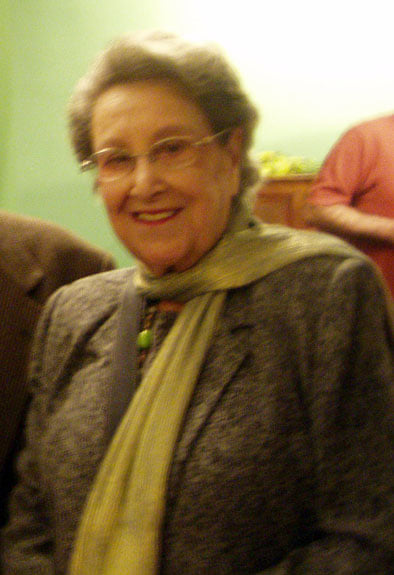
Social and Family Life
Nora’s parents and grandparents had all been part of the political and artistic elite of Egypt. Their homes often served as salons for literary and artistic gatherings, where writers, musicians, members of the clergy and artists would mingle. Therefore, Nora could not imagine a different lifestyle. That is why she continued that tradition herself, at her homes in Cairo, Boston and finally Detroit.
Nora served as president of the Tekeyan Cultural Association in Detroit for 13 years, organizing art shows, staging plays, concerts and exuberant Christmas parties. She also served for 30 years on the Fine Arts Committee of St. John’s Armenian Church and together with Zabel Belian and the other committee members, brought to life the Armenian art world in Detroit.
She had one son, actor Gerald Papasian, from her first marriage. Gerald is following in the footsteps of his mother and the rest of his family and is a professional actor and director based in Yerevan and Paris.
Nora married writer and editor Edmond Y. Azadian. They had much in common; their lifestyle, their philosophies were perfect matches. They had a harmonious and loving family. The only sore point was that Nora had been a graceful dancer of Viennese waltzes and Edmond was an awkward dancer and could never keep up with her. It was Nora’s only frustration in life that she and her husband could not manage a single decent dance together.
As the last chapter of her life is concluded, the reverberations of her lush recitations will remain in the memory of all who had met her. She had touched many lives with compassion, grace and dignity. They all remember her aristocratic and artistic personality as expressed through her humility.













